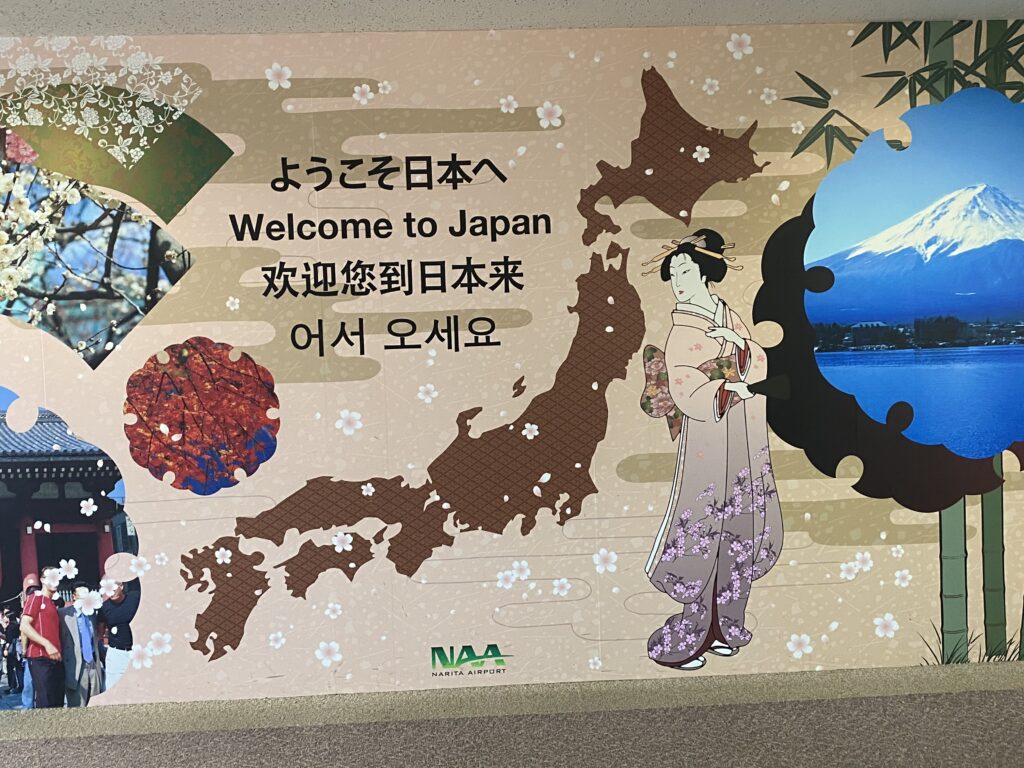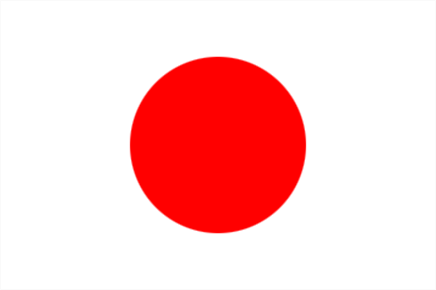
NARITA AIRPORT

National Flag and Anthem

National Flag
Nisshoki
(also known as Hinomaru)

National Anthem – Kimi ga Yo
About Japan
Japan (Japanese: 日本, i, Nippon or Nihon, and formally 日本国, Nihonkoku) is an island country in East Asia. It is situated in the northwest Pacific Ocean and is bordered on the west by the Sea of Japan, extending from the Sea of Okhotsk in the north toward the East China Sea, Philippine Sea, and Taiwan in the south.
- Calling code: +81
- Government: Unitary parliamentary Constitutional monarchy
- Currency: Japanese Yen (¥)
To outsiders, Japan is an exotic, but distant, country of customs, geisha girls, cherry blossom, sumo wrestling and tea ceremony. But it is so much more!
I lived and worked in Tokyo for several years where I embraced the culture and traditions. Therefore, my experience is that of a foreigner living in Japan. However, this summer I visited Tokyo as a tourist and my experience was just as wonderful!
Deep in the Heart of Japan
At the heart of Japan is its rich history, culture and tradition:
Shinto shrines, Buddhist temples, Japanese garden (Nihon Teien) Castles (Shiro), Zen sect, tea ceremony (Sado or cha no yu), Tanka and Haiku, flower arrangement (Ikebana), theatre and martial arts, traditional craft, events, folklore and of course, Japanese food.
Land of the Rising Sun
- The words, Japan, Nippon, Nihon all means “the origin of the sun” i.e. where the sun rises and that it is the reason why the country is often called the land of the rising sun.
- To the eyes of the Chinese people, Japan is in the direction where the sun rises. ( Japan is on the east of China.)
Feudal Era to Modernity


Japan’s feudal era was characterized by the emergence and dominance of a ruling class of warriors, the samurai.
Modern era
The United States Navy sent Commodore Matthew C. Perry to force the opening of Japan to the outside world. Arriving at Uraga with four “Black Ships” in July 1853, the Perry Expedition resulted in the March 1854 Convention of Kanagawa. Subsequent similar treaties with other Western countries brought economic and political crises. The resignation of the shōgun led to the Boshin War and the establishment of a centralized state nominally unified under the emperor (the Meiji Restoration). Adopting Western political, judicial, and military institutions, the Cabinet organized the Privy Council, introduced the Meiji Constitution (November 29, 1890), and assembled the Imperial Diet.
KIZUNA
- KIZUNA“Kizuna” means the enduring bonds between people—close relationships forged through mutual trust and support. This magazine will convey various aspects of Japan, such as its people, nature, technologies, cities and regions, and its important policies, in order to deepen “kizuna” between Japan and the rest of the world.
- KIZUNA Linking Japan and the World